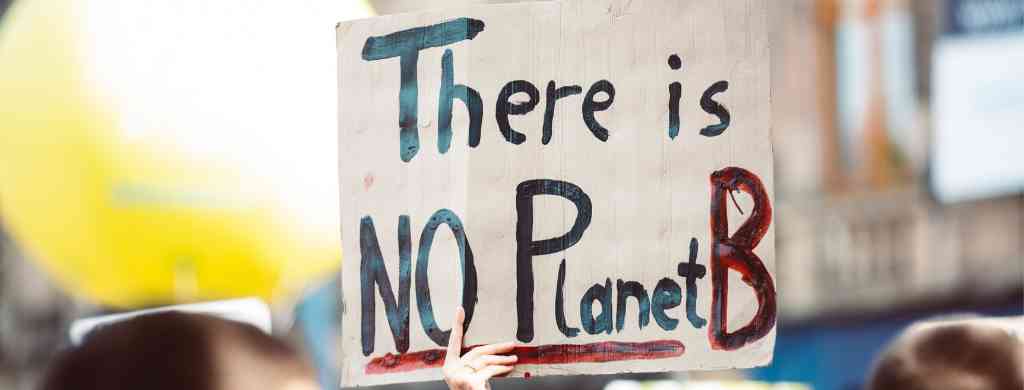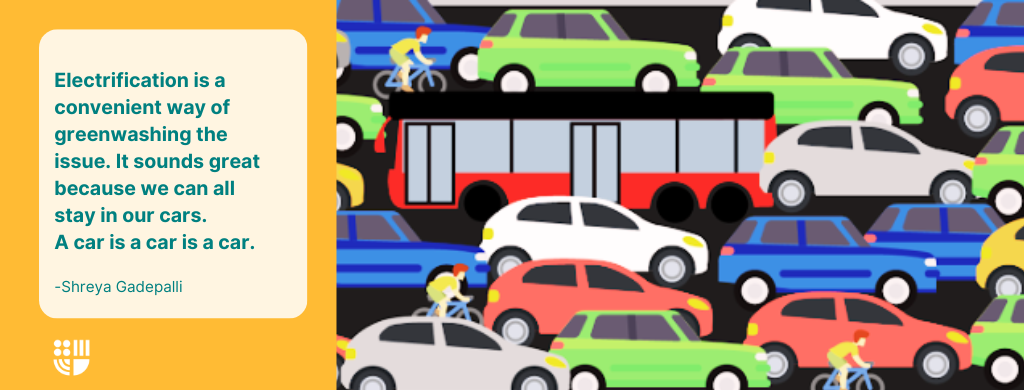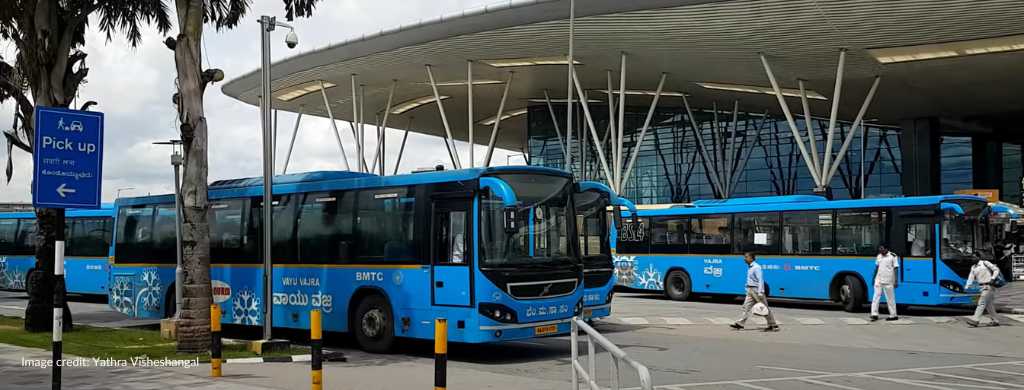Why should they change their behaviour? Why should anyone take buses seriously? We realised buses were “boring” and needed an image makeover. Buses should be “cool”.
It has been ten years since I have been in the field of Communications, making my livelihood in telling stories. But in 2018, when I changed gears to communications for social impact projects, I saw how this side of the world was so different! There was no product or service to sell, but the communication had to bring behaviour change.
In 2022, I joined UrbanWorks as the Communications lead, reporting to the Founder, Shreya Gadepalli. In a few months, we launched a public campaign called “Bus4us” to garner public support for buses in India. The campaign was launched in Ahmedabad and Bangalore. And it has been an eye-opening experience so far!
We started with a simple premise: “Buses are any day better for the environment because “60 people in a bus versus 1 in a car”. Furthermore, if people are given more buses, better buses and faster buses, more people will take the bus, and that will decongest our cities. This means buses need sustained funding.” However simple the premise was for us, we knew that it wasn’t the same for others. Why should they change their behaviour? Why should anyone take buses seriously? We realised buses were “boring” and needed an image makeover. Buses should be “cool”.
Learnings on why moralistic preachings don’t really work in climate change communications:
1. Tapping the wrong emotions:
When we use language that elicits emotions such as guilt, envy or humiliation about their behaviour, we push people away from our main point. No one wants to feel “guilty” for thinking they are the worst person on this earth for driving a car. It only makes them think, “Okay, but everyone is doing it, so what?” When changing gears, we tapped into emotions such as “buses are our pride” to bring out the love for buses.
2. Wrong framing:
If one sees buying a car as an aspiration, you can’t convince them that they shouldn’t buy it because it is terrible for the climate. Instead, we showed why buses are aspirational, cool and efficient. For example, we made a case for the airport bus in two cities (Ahmedabad and Bengaluru), which were the faster, better and more efficient modes of transport and deserved public adoption.
3. Only sharing the fairytale:
Through this campaign, we curated and shared beautiful bus stories- stories of commuters of all kinds and showed the impact of buses in people’s lives. This was great, but too many positives and negligible criticisms raise questions such as “Are you trying to say that the buses are perfect? Join us in peak hours, and you will know.” To tackle this, we had to change the strategy to capture genuine public emotions about the bus, whether good or bad. This changed our narrative: Buses are good and need to improve; let’s demand this together.
4. Logic doesn’t work:
People have a considerable amount of “empathy fatigue” when doomsday data are bombarded so much that they don’t care about anything at all. The logic that people only need more information to change their actions is flawed. People also know that for anything to change, large corporations and governments must leave their hogwash and shift their ways. So how do you get a regular person to change their ways? That’s the tricky part. But sharing intense data doesn’t help for sure.
5. Converting the converted:
If you work in the climate change/sustainability field, there is a certain language that you understand. That language speaks to you, but it will not appeal to the people who don’t agree with the core idea of your cause. I knew from day one that I or people like me were not the audience of this campaign. And hence if a piece of communication speaks to me, then it may as well be absolutely wrong.
A year of working at UrbanWorks has been 2x learning for me. It was evident that a live campaign can change direction anytime, and we need to be ready for it. And that’s what we have been doing.




